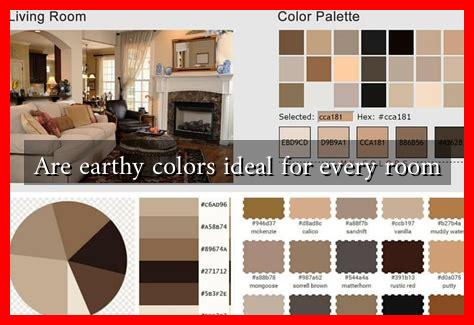-
Table of Contents
Are Earthy Colors Ideal for Every Room?
When it comes to interior design, color plays a pivotal role in setting the mood and atmosphere of a space. Earthy colors, which include shades of brown, green, beige, and terracotta, have gained popularity for their natural and calming qualities. But are these colors suitable for every room in your home? This article explores the benefits and potential drawbacks of using earthy tones in various spaces, providing insights to help you make informed design choices.
The Allure of Earthy Colors
Earthy colors are often associated with nature, evoking feelings of warmth, comfort, and tranquility. They can create a harmonious environment that promotes relaxation and well-being. Here are some reasons why earthy colors are favored in interior design:
- Versatility: Earthy tones can complement a wide range of styles, from rustic to modern.
- Timelessness: These colors tend to remain in style, making them a safe choice for long-term design.
- Connection to Nature: Earthy colors can bring the outdoors inside, fostering a sense of peace and grounding.
- Warmth: They can make a space feel inviting and cozy, perfect for living areas and bedrooms.
Living Rooms: A Perfect Match
The living room is often the heart of the home, where families gather and relax. Earthy colors can enhance this space by creating a warm and inviting atmosphere. For example, a soft beige or muted olive green can serve as a neutral backdrop, allowing for colorful accents through furniture and decor. According to a study by the National Association of Realtors, homes with warm, inviting colors tend to sell faster, indicating that earthy tones resonate well with potential buyers.
Bedrooms: A Sanctuary of Calm
In the bedroom, earthy colors can promote relaxation and restful sleep. Shades like soft browns and muted greens can create a serene environment conducive to winding down. A case study by the Sleep Foundation found that individuals who sleep in rooms painted in calming colors report better sleep quality. Consider using earthy tones for bedding, curtains, and wall paint to create a cohesive and tranquil space.
Kitchens: A Balancing Act
While earthy colors can work well in kitchens, it’s essential to strike a balance. Bright, vibrant colors are often preferred in this space to stimulate appetite and energy. However, incorporating earthy tones can add warmth and depth. For instance, a terracotta backsplash paired with white cabinetry can create a beautiful contrast. According to a survey by Houzz, 60% of homeowners prefer neutral colors in their kitchens, with earthy tones being a popular choice.
Bathrooms: A Refreshing Retreat
Bathrooms are often overlooked when it comes to color selection, but earthy tones can transform this space into a spa-like retreat. Soft greens and sandy beiges can evoke a sense of cleanliness and tranquility. A study by the American Institute of Architects found that natural materials and colors in bathrooms contribute to a more relaxing experience. Consider using earthy tiles or paint to create a soothing atmosphere.
Potential Drawbacks of Earthy Colors
While earthy colors have many benefits, they may not be ideal for every room or every individual. Here are some potential drawbacks to consider:
- Darkness: Some earthy tones can make a room feel smaller or darker, especially in spaces with limited natural light.
- Overwhelming Warmth: Too many warm earthy tones can create a heavy atmosphere, making a space feel stuffy.
- Personal Preference: Not everyone resonates with earthy colors; some may prefer brighter, more vibrant hues.
Conclusion: Finding the Right Balance
In conclusion, earthy colors can be ideal for many rooms, offering warmth, versatility, and a connection to nature. However, it’s essential to consider the specific function of each space and the preferences of its inhabitants. By balancing earthy tones with other colors and materials, you can create a harmonious and inviting home. Whether you choose to embrace earthy colors in your living room, bedroom, kitchen, or bathroom, the key is to find a balance that resonates with your personal style and enhances your living environment.
For more insights on color psychology and interior design, you can visit Houzz or Apartment Therapy.

